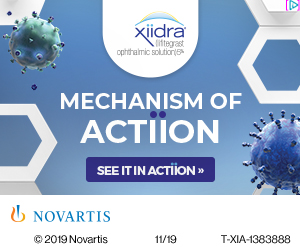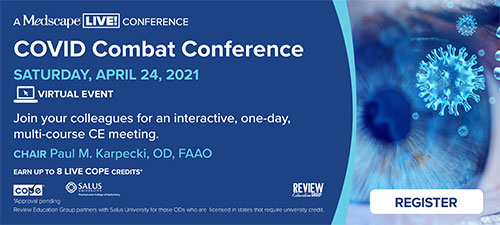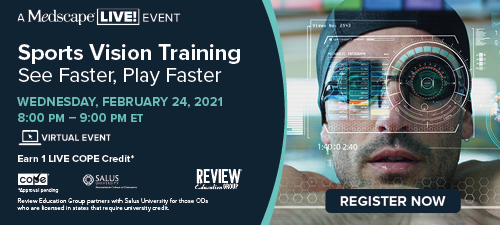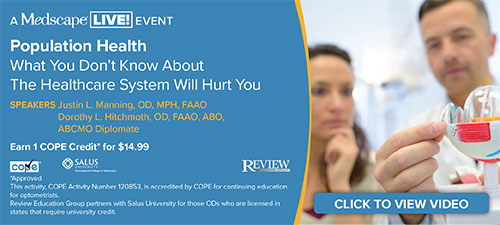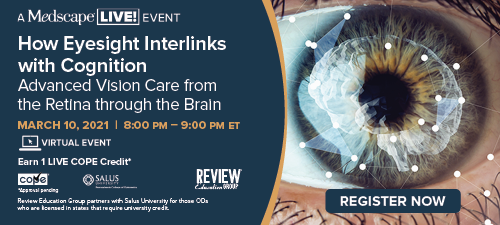
A
weekly e-journal by Art Epstein, OD, FAAO
Off the Cuff: Is Being a Doctor in America DOA?
Although this may seem odd to younger readers, there was a time when doctors were loved by all and could do no wrong. Movies and television glorified the doctor in society. One of the first movies I recall seeing was “The Last Angry Man,” a story about Dr. Sam Abelman, a testy but dedicated and uncompromising GP whose Brooklyn, N.Y., practice had distilled down to caring for the poor and abandoned in a NYC slum. Abelman’s life of selfless dedication to his patients was brought into sharp focus through the lens of TV producer David Wayne who desperately wanted to document the last of what he believed a dying breed. It was pretty impressive to a young me.
|
|||||
 |
||
| Multifocal Orthokeratology Versus Conventional Orthokeratology for Myopia Control: a Paired-Eye Study | ||||
Researchers conducted a prospective, paired-eye, investigator masked study in 30 children with myopia (-1.25D to -4.00D; ages 10 to 14 years) to test the efficacy of a novel multifocal orthokeratology (MOK) lens compared with conventional orthokeratology (OK) in slowing axial eye growth. The MOK lens molded a center-distance multifocal surface onto the anterior cornea, with a concentric treatment zone power of +2.50D. Children wore an MOK lens in one eye and a conventional OK lens in the fellow eye nightly for 18 months. Eye growth was monitored with non-contact ocular biometry. |
||||
SOURCE: Loertscher M, Backhouse S, Phillips JR. Multifocal orthokeratology versus conventional orthokeratology for myopia control: A Paired-Eye Study. J Clin Med. 2021; Jan 24;10(3):447. |
||||
 |
||
| Cholesterol and Glaucoma: a Systematic Review and Meta-analysis | ||||
Intraocular pressure is the main risk factor for glaucoma; however, additional risk factors may also matter. This systematic review and meta-analysis were conducted to summarize the evidence regarding the association of cholesterol parameters (total cholesterol, low-density lipoprotein (LDL) and high-density lipoprotein [HDL] levels) and glaucoma. Four electronic databases were searched for all publications containing “glaucoma” and one of various forms of “cholesterol” or “lipoprotein.” Two independent reviewers screened abstracts and potentially full texts of identified articles for eligibility. Risk of bias was assessed with the Newcastle-Ottawa Scale. A random-effects meta-analysis was used to investigate the differences in total cholesterol, LDL and HDL levels between patients with and without glaucoma.
|
||||
| SOURCE: Posch-Pertl L, Michelitsch M, Wagner G, et al. Cholesterol and glaucoma: a systematic review and meta-analysis. Acta Ophthalmol. 2021; Jan 28. [Epub ahead of print]. | ||||
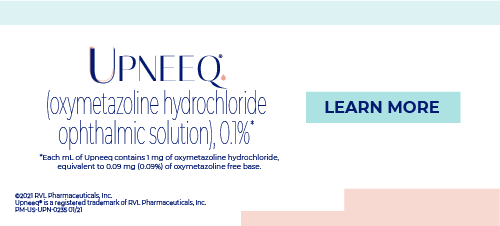 |
||
| The Relationship of Dry Eye Disease with Depression in Saudi Arabia: a Cross-sectional Study | ||||
This is descriptive cross-sectional study of 476 patients with dry eye disease (DED) was conducted to estimate the prevalence of depression among individuals with a DED in Saudi Arabia using two questionnaires—Patient Health Questionnaire (PHQ-9) and Dry Eye Questionnaire (DEQ-5)—and explore potential factors implicated in the development of depression among the DED population. The questionnaires were merged and distributed using Google Forms through various social media platforms targeting the Saudi population. After data collection, the data was revised, coded and fed to statistical software IBM SPSS version 22 (SPSS, Chicago). Depression was diagnosed among 200 participants (42%) of the cases with dry eyes, of which 5.7% had mild depression, 13.9% had moderate depression, 12.6% had moderately severe depression and 9.9% had severe depression. A female predominance was noticed; 44.7% of the females with dry eyes had depression compared to 32.4% of males with recorded statistical significance. Depression was detected among 55% of those who were less than 20 years old compared with 27% of those who were 30 years or older. Laser-assisted in-situ keratomileusis (LASIK), prolonged electronic device usage and contact lens wear were reported as risk factors associated with an increase in dry eye symptoms. However, no statistically significant relationship was found between contact lens wear and depression among dry eye disease patients. |
||||
| SOURCE: Al-Dairi W, Al Sowayigh OM, Alkulaib NS, et al. The relationship of dry eye disease with depression in Saudi Arabia: a cross-sectional study. Cureus. 2020; Dec 18;12(12):e12160. | ||||
 |
||
| News & Notes | |||||||||||||||||||||||||||||
| J&J Vision Names Menziuso as Worldwide President for Vision Care Johnson & Johnson Vision announced that Peter Menziuso is assuming the role of worldwide president, Vision Care, for Johnson & Johnson Vision immediately. Menziuso replaces Swami Raote, who retired at the end of 2020 after a 29-year tenure with Johnson & Johnson. Menziuso most recently served as president, Cardiovascular & Metabolism, Janssen, where he led the organization in its mission to advance cardiovascular and metabolic care. Additionally, he provided strategic oversight for Xarelto and Invokana in the United States as well as the full pharmaceutical portfolio of Janssen products in Puerto Rico and Canada.
|
|||||||||||||||||||||||||||||
| Surface Ophthalmics Announces First Patient Dosed in Phase II SURF-100 Trial Surface Ophthalmics announced that the first patient was dosed in the Phase II clinical trial for its investigational product SURF-100 (mycophenolate sodium and betamethasone sodium phosphate in Klarity vehicle) for the treatment of chronic dry eye disease. SURF-100 utilizes a new and differentiated mechanism of action by combining mycophenolate sodium and betamethasone sodium phosphate in the patented Klarity diluent. This combination is designed to increase residence time and patient comfort, and promote ocular healing in a non-blurring formulation. The clinical trial will directly compare SURF-100 with lifitegrast ophthalmic solution 5% (marketed as Xiidra) and cyclosporine ophthalmic emulsion 0.05% (marketed as Restasis). Learn more.
|
|||||||||||||||||||||||||||||
| FastBack Launches FastCheck Thermal Imaging & Facial Recognition System FastBack announces the launch of FastCheck, a thermal imaging and facial recognition system to keep businesses healthy, secure and organized. Designed to instantly read body temperature within two feet, the smart technology visually and/or audibly sends alerts via a green (go) or red (stop-elevated temperature alert) signal, reminds individual to wear a mask if not detected and keeps records for contact tracing, among other features. Learn more. |
|||||||||||||||||||||||||||||
| Prevent Blindness & B+L to AMD Launch Video Series B+L and Prevent Blindness are joining together for the sixth consecutive year during AMD Awareness Month in February to raise awareness about age-related macular degeneration. The two organizations will launch a year-long video series that will feature the personal stories of people who have AMD and the strategies they have for living a healthy lifestyle. The groups will post a variety of content on their social media pages in February to share facts and helpful information about AMD, and B+L will donate $1 to Prevent Blindness and its sight-saving fund for every “share” or “like” of certain posts from the company’s SightMatters Facebook page. Learn more. |
|||||||||||||||||||||||||||||
|
|||||||||||||||||||||||||||||
|
Optometric Physician™ (OP) newsletter is owned and published by Dr. Arthur Epstein. It is distributed by the Review Group, a Division of Jobson Medical Information LLC (JMI), 19 Campus Boulevard, Newtown Square, PA 19073. HOW TO ADVERTISE |



